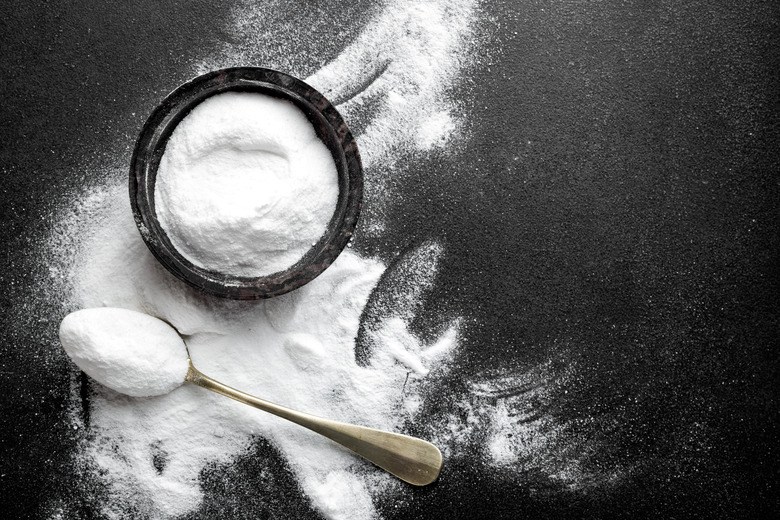What Is The pH Level Of Baking Soda?
Baking soda, a substance found in most kitchens, has the chemical name sodium bicarbonate and has a pH of 9. Besides its role as an ingredient for cooking, it has many other household uses; for example, it can clean surfaces, deodorize your refrigerator or remove odors from carpets.
TL;DR (Too Long; Didn't Read)
Baking soda, also known as sodium bicarbonate, has a pH of 9, making it a mildly alkaline substance.
The Meaning of pH
The Meaning of pH
The pH of a substance is a measure of acidity and alkalinity. The scale ranges from -1 to 15, with low values being acidic and high values being alkaline. Pure water has a neutral pH value of 7. Weak acid or base solutions have a pH close to 7; stronger acids and alkalis have a pH closer to the extreme values of -1 and 15. Generally, strong acids and alkalis also pose more hazards than weak ones, though exceptions exist. For example, a strong solution of sulfuric acid will dissolve steel, whereas phosphoric acid, present in cola drinks, is safe to consume in small amounts. Since baking soda has a pH of 9, this makes it a weakly alkaline substance. Other household examples include lime juice (pH 2), wine (pH 3.5) and household ammonia (pH 12).
Microscopic Meaning of pH
Microscopic Meaning of pH
pH, on the microscopic scale, is a measure of the concentration of hydrogen ions. The more hydrogen ions present, the higher the acidity. The mathematical relationship between pH and hydrogen ions is:
pH = -log10[H+]
In this this equation, H+ represents the molar concentration of hydrogen ions.
Since pH is all about hydrogen ions in an aqueous (water-based) solution, and baking soda is a dry powder, it doesn't really have a pH as such by itself. To get a pH reading, you need to mix baking soda with water. The chemical formula for baking soda is NaHCO3; dissolved in water, it splits into the positive sodium ion (Na+) and the negative bicarbonate ion (HCO3-), which float freely in the water. If you dip litmus paper into the solution, it will indicate the pH.
Baking Soda: Chemist's Friend
Baking Soda: Chemist's Friend
Chemists keep baking soda handy to neutralize accidental acid spills and splashes. Because baking soda is safe to handle, inexpensive and mildly alkaline, it can help render small spills of sulfuric or hydrochloric acid less dangerous. When poured on a spill, the sodium bicarbonate reacts with the acid to form salt, carbon dioxide and water.
Baking Soda "Volcano"
Baking Soda "Volcano"
The reaction between baking soda and mildly acidic household substances such as vinegar or orange juice form the basis for several kitchen science experiments, such as the volcano. You put baking soda in a small empty plastic tube or soda bottle, then add vinegar or fruit juice. The carbon dioxide makes the solution bubble and foam, vigorously overflowing from the bottle. The results will also be messy (though not harmful), so do the experiment outdoors or have a mop handy for cleanup.
References
Cite This Article
MLA
Markings, Samuel. "What Is The pH Level Of Baking Soda?" sciencing.com, https://www.sciencing.com/ph-level-baking-soda-5266423/. 25 April 2018.
APA
Markings, Samuel. (2018, April 25). What Is The pH Level Of Baking Soda?. sciencing.com. Retrieved from https://www.sciencing.com/ph-level-baking-soda-5266423/
Chicago
Markings, Samuel. What Is The pH Level Of Baking Soda? last modified March 24, 2022. https://www.sciencing.com/ph-level-baking-soda-5266423/
